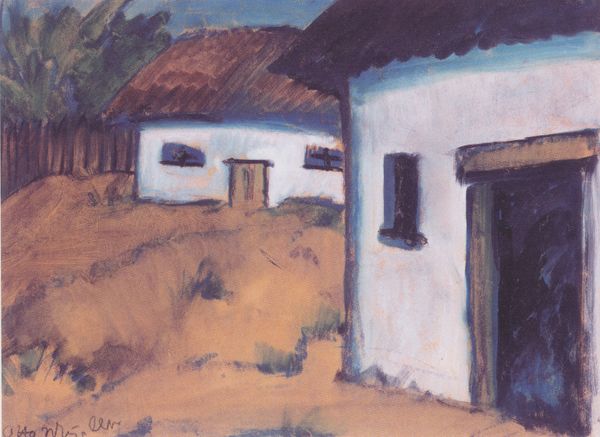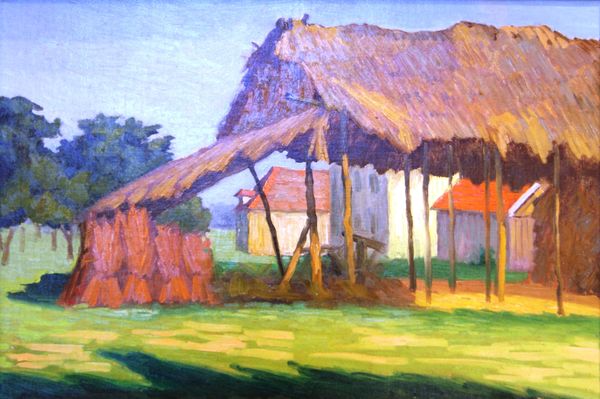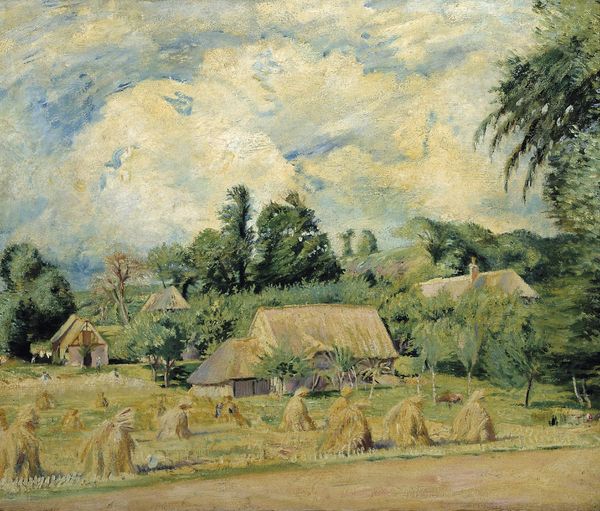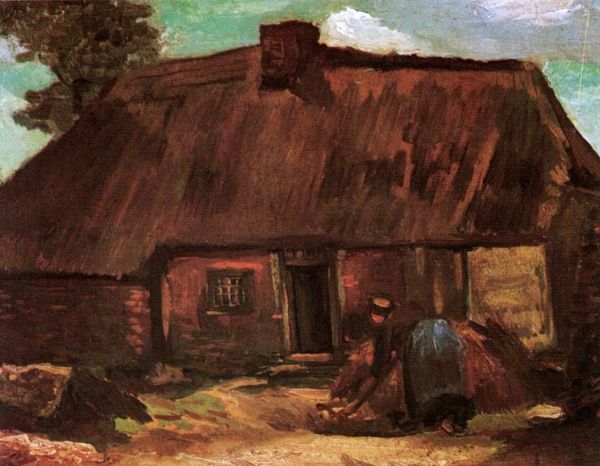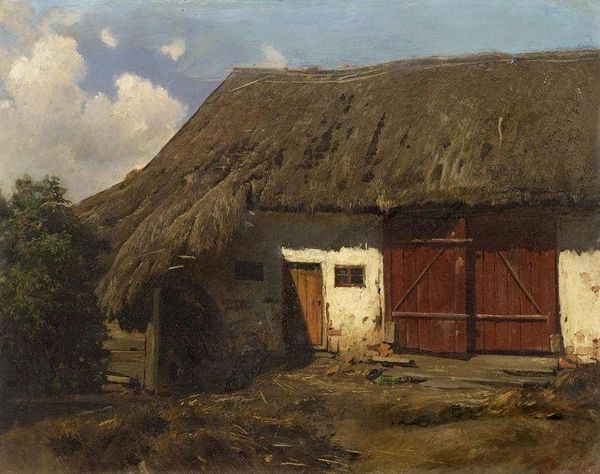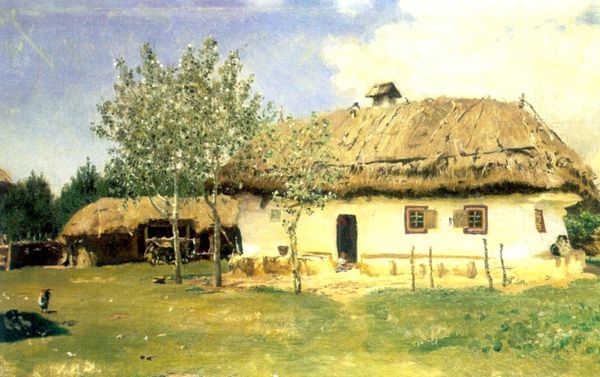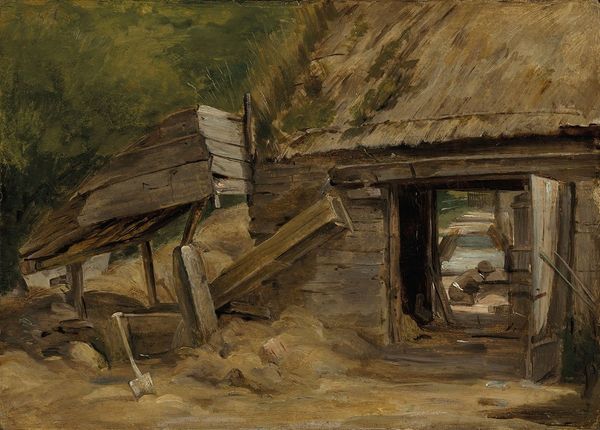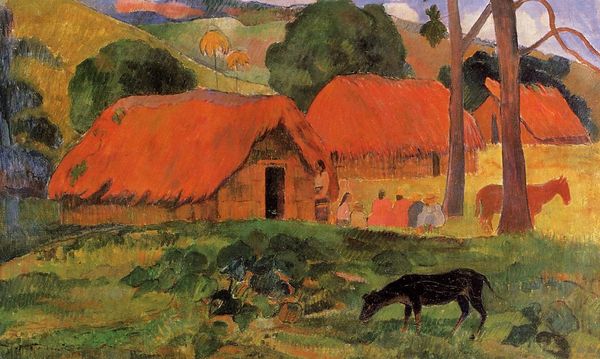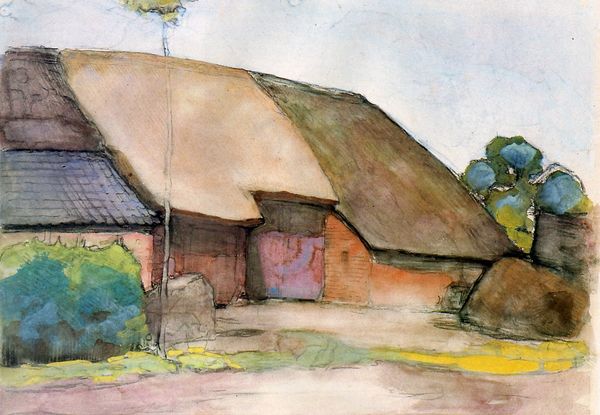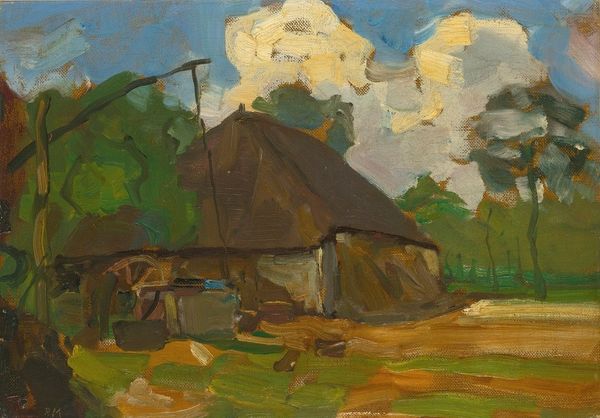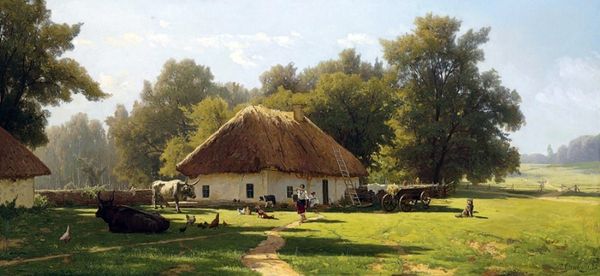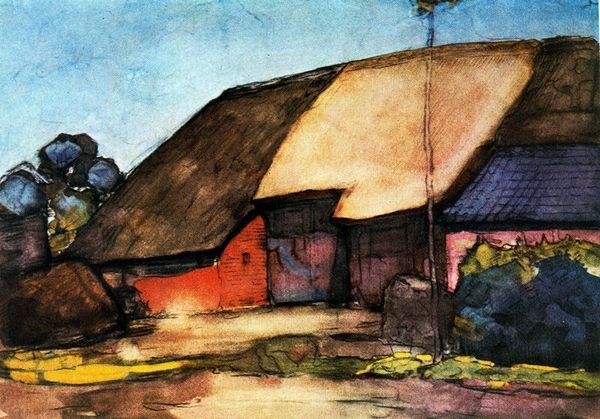
painting, plein-air, oil-paint
#
painting
#
impressionism
#
plein-air
#
oil-paint
#
landscape
#
oil painting
Copyright: Public domain
Editor: So, here we have Cézanne's "The Oilmill" from 1871, an oil painting. It feels...rustic. The buildings almost huddle together, and the colors are so earthy. What do you see in this piece? Curator: I see a yearning for an older way of life. Oilmills, especially at this time, are symbols of tradition, of self-sufficiency. Consider the darkness of the trees surrounding the mill – it evokes the density of time and history bearing down on this place. But notice how Cézanne doesn’t romanticize it completely. Editor: What do you mean? Curator: The brushstrokes are broken, fragmented. The scene isn’t seamless, like a photograph might render it. Is that sense of unease perhaps connected to anxieties brought about by modernization and its effect on rural populations? Editor: Maybe it's not just a simple landscape; the oil mill is loaded with meanings beyond what meets the eye. It makes you think about a disappearing way of life. Curator: Precisely. It is loaded. We could even explore its connection to concepts of "harvest," cycles of life, the bounty of the land as they persist through centuries. Can you think of any connections like these to prior or current works? Editor: Well, now that you mention the cyclical thing, it has resonance across time. That helps me think about not only its art historical place, but also its place in culture. Thanks for opening my eyes! Curator: Indeed! Seeing how an image is loaded with symbolism is very rewarding. There is more than initially meets the eye.
Comments
No comments
Be the first to comment and join the conversation on the ultimate creative platform.
